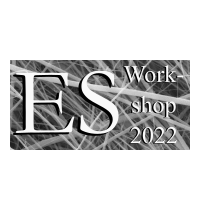Call for Abstracts
Special Issue on Ceramic and Composite Fibers for Energy and Health Applications
Open Ceramics, the official, peer-reviewed, Open Access journal of the European Ceramic Society, published by Elsevier, invites research and review articles to be published in a special issue “Ceramic and Composite Fibers for Energy and Health Applications”.
Electrospinning is a versatile additive technique to fabricate materials in one-, two- and three-dimensional forms, which allows facile integration of functional polymeric and inorganic materials in devices. Besides engineering of self-supported nanofiber meshes and scaffolds, electrospinning allows cross-linking pathways and intimate combination of dissimilar materials that has led to a large number of applications in diverse fields such as gas sensing, Li-ion batteries, photovoltaics, electrochemical water splitting, filtration processes, wound dressing or drug delivery approaches. As a versatile, simple and scalable method for generating micro/nanofibrous materials, electrospinning had received increasing attention in recent years. By variation of process parameters, characteristic properties such as material composition, morphology, size or porosity can be modified to fit the desired application needs.
The aim of this featured issue is to solicit original articles addressing current progress in the electrospinning of ceramic and composite fibers, advancing the status quo in energy and health related applications. Thus, Open Ceramics welcomes novel contributions related to electrospinning technique, electrospun functional materials, new engineering concepts and modelling and application of electrospun fibers.
- Net-shaping of materials (polymeric/inorganic/composites)
- Generation of ceramic or composite fibers with improved functionalities
- Integration of single fibers or meshes in device architectures
- Core-shell fiber geometries applications in field of energy or health
- New techniques (melt spinning, multi-nozzle and coaxial electrospinning)
- Large-scale fabrication of functional fiber meshes
- Hierarchical, 3-D fiber structure design
- Multi-flow techniques for the generation of novel compositions
- New application of nanofibers and meshes
We kindly invite you to submit your work to contribute to this special issue.
Deadline for manuscript submission: December 31th, 2021.
Special Issue Guest Editors
Prof. Sanjay Mathur
University of Cologne, Chair of Inorganic and Materials Chemistry, Cologne, Germany
Prof. Filippo Pierini
Polish Academy of Sciences, Institute of Fundamental Technological Research, Warsaw, Poland
Prof. Ravi Kumar N. V.
Indian Institute of Technology Madras (IIT Madras)
Department Metallurgical & Materials Engineering, India
Open Ceramics, Editor-in-Chief
Prof. Ing. Paolo Colombo
University of Padova, Department Industrial Engineering, Via Marzolo 9, 35131 Padova, Italy and The Pennsylvania State University, Department of Materials Science and Engineering, University Park, PA 16802, USA
Special Issue Information
We are pleased to inform you that this Special Issue will waive the APC (Article Publishing Charge) until 31st December 2021. This will be applicable for any submissions received before this date, which are accepted for publication after peer review.
When submitting your manuscripts, please specify that your paper is a contribution to the Special Issue entitled “Ceramic and Composite Fibers for Energy and Health Applications” and select the article type “VSI: Ceramic and Composite Fibers”. Please also refer to the Author Instructions (via https://www.elsevier.com/journals/open-ceramics/2666-5395/guide-for-authors) prior to submission for the proper format of your manuscripts.
Supplementary data or material related to the articles published in this Special Issue can be uploaded in Mendeley Data Repository https://data.mendeley.com/ or in other repositories listed here and referred to as indicated in the Guide for Authors of this journal.
Example of Reference to a dataset:
[dataset] [6] M. Oguro, S. Imahiro, S. Saito, T. Nakashizuka, Mortality data for Japanese oak wilt disease and surrounding forest compositions, Mendeley Data, v1, 2015. https://doi.org/10.17632/xwj98nb39r.1.
Websites:
https://ecers.org/en/journals/open-ceramics.html
https://www.journals.elsevier.com/open-ceramics/
